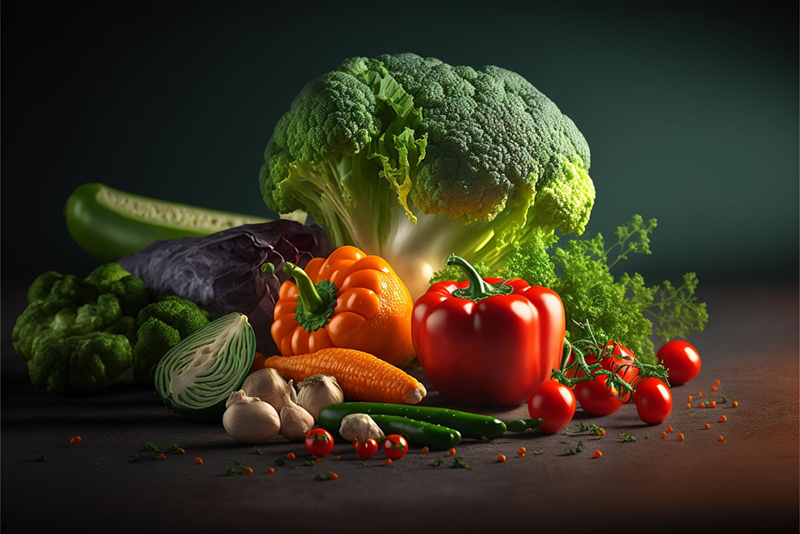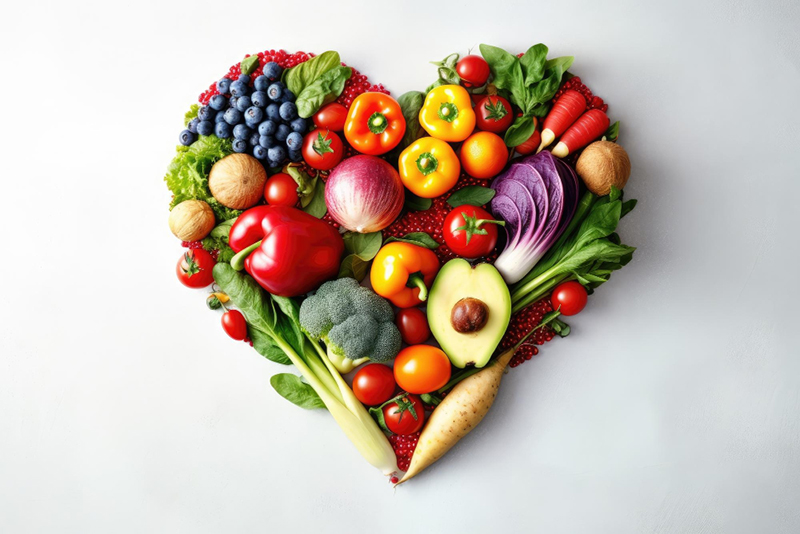The word “superfood” is thrown around quite liberally in nutrition. It invokes images of a food that stands above all others; the answer to all the health issues you can think of. But what exactly is a superfood, and what makes a food “super”?
While there’s no agreed scientific definition or parameters for superfoods, Miriam Webster defines a superfood as a food that is rich in compounds (such as antioxidants, fiber, vitamins, or fatty acids) considered beneficial to a person’s health. In plainer terms, superfoods provide more desirable nutrients than regular food.
On the flip side, some see superfoods as a marketing ploy used by food companies to create headlines and popularize products. After all, the idea that food can prevent or even cure common health issues are appealing to everyone. That’s all the more evident once you find out. In 2022, the superfoods market was valued at over 162 billion US dollars.
Today, we’re diving into the world of superfoods- past the headlines and the hype- to find out the true science behind them.
The Science Behind Superfoods
Certain foods undoubtedly have more nutrients than others, but there is currently no conclusive scientific evidence to prove that some foods should be considered “super” while others with similar health benefits should be considered, well, regular.
Science does tell us, however, that all fruits and vegetables have plenty of health benefits. Eating a diet that’s full of fruits and veggies helps to lower blood pressure, lowers risk of digestive problems, and reduces the risk of stroke and heart disease.
Eating one “super” food can’t yet be proven to completely change your health for the better, so it’s best to stick with a variety of fruits and vegetables, which, when working together, have been scientifically proven to better your health. (More on that later.)
Popular Superfoods and Their Benefits
One of the most well-known superfoods of the last ten years is without a doubt the avocado. These green fruits are packed with healthy fats that keep you full for longer, and they’re full of antioxidants like vitamin E and lutein, which are known for their health-boosting properties and ability to protect the eyes, respectively.
This dark, leafy green is jam-packed with fiber, folate, manganese, and a plethora of vitamins. It’s also very low in calories (at only 7 to 20 calories a cup), meaning you’re getting a lot of nutrients without a high-calorie intake.
Salmon
Salmon is filled with omega-3 fatty acids, which support brain health, and vitamin B12, which is essential to the production of red blood cells. What’s more, research suggests that salmon could reduce the risk of heart disease and may also help in losing and keeping off weight.
Blueberries are a superfood favorite thanks to the number of antioxidants packed inside. They can help lower the risk of heart disease, in addition to helping with inflammation, which is a huge part of all chronic diseases.
Besides the handful of well-known superfoods described above, there are dozens of lesser-known superfoods, like reishi, a mushroom that can help support the immune system and improve sleep, and shilajit, a substance found that is thought to increase iron levels and could slow the progression of Alzheimer’s.
Incorporating Superfoods into Your Diet
Though superfoods may seem hard (not to mention, expensive) to incorporate into your meals, there are plenty of ways you can quickly and easily integrate superfoods into your everyday diet.
Smoothies are a great way to consume multiple superfoods at once and plenty of superfoods lend themselves perfectly to a fruity, refreshing smoothie. Try mixing blueberries, strawberries, and ginger into your smoothie for a little extra sweetness. It’s not just superfruits that you can add to your smoothie, though. Classically “savory” superfoods like avocado and kale blend well into smoothies, thanks to their mild flavor, which is easily covered up by the fruit ingredients.
Salads are another meal that can easily be edited to include superfoods. Everyone loves a little crunch in their salad, so consider adding some slivered almonds or a sprinkling of chia seeds to the top of yours.
There’s also a good chance that you’re already consuming superfoods and don’t even know it. Garlic, olive oil, and dark chocolate are all superfoods packed with nutritional benefits.
Superfoods and Lifestyle
Though superfoods contain plenty of good-for-you nutrients and health benefits, they shouldn’t be viewed as a cure-all for any disease or ailment.
For example, you can eat all the broccoli and kale in the world, but if you smoke cigarettes, these superfoods probably won’t singlehandedly stop you from getting lung cancer. Instead, superfoods work best when paired with a healthy lifestyle, regular exercise, and a balanced diet.
Adults should consume at least 5 portions of fruit and vegetables each day. The more variety and color between these portions, the better. And just because food companies haven’t yet deemed certain fruits or veggies as a “superfood” doesn’t mean that they’re unhealthy.
For example, grapes are hardly ever described as a superfood, yet they include nutrients that boost immunity, protect your eyes, and improve heart health.
The Business of Superfoods
Since the coining of the word “superfood” in the 20th century (bananas were the first to get the superfood marketing treatment, by the way), the word has become a food industry favorite. In 2015 alone, there was a 35% increase in the number of foods or beverages launched that used “superfood” somewhere in their title.
It doesn’t look like the business of superfoods is slowing down anytime soon. It’s predicted that the superfoods market will be worth $263.08 billion US dollars by 2032.
As the superfood industry grows, so does the demand for more land to increase production. When more and more land is cleared, the issue of long-term sustainability and environmental degradation comes into play.
Because of this increased concern for the environment, consumers are becoming increasingly aware of the impact of their purchases.
Carbon-labeled products saw 3.4 billion US dollars worth of sales in 2021, double that of 2020. What’s more, according to The Round Up, 84% of customers say that “poor environmental practices will alienate them from a brand or company”.
Many businesses, food companies included, are deciding to highlight their commitment to sustainable practices nowadays rather than solely promoting the benefits of their product.
Conclusion
So, are superfoods simply a marketing ploy? Well, it’s not a question that can be answered with a simple “yes” or “no”. Food companies have been using the term “superfood” to convince consumers to buy their products since the early 20th century, and it’s certainly worked, with the superfoods market currently valued at around 162.6 billion U.S. dollars.
There’s no denying that the term “superfood” is used to make certain foods look more attractive. However, this doesn’t mean that the foods that are seen by the public as “superfoods” aren’t healthy, because many of them are. Foods that are considered superfoods are packed with vitamins, minerals, and antioxidants that are essential to leading a healthy life.
Harvard School of Public Health recommends not getting caught up in the latest superfood trends, and instead focusing on “creating a ‘super plate’” that features a variety of healthy foods. Which superfoods and the amount of them you should consume varies from person to person, but they certainly are best paired with exercise, a balanced diet, and plenty of sleep.
To learn more about superfoods and the science behind them, visit the resources below.
Additional Resources:

